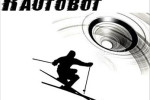The first round of the 2013-2014 Y-Prize saw a wide range of inventive submissions from student teams across the university. Now, four finalist teams are hard at work (with assistance from their GRASP Lab tech consultants and Wharton business consultants) to perfect their ideas for commercializing Penn robotics technology. As a testament to the creativity that can flourish through such cross-university collaborations, their ideas encompass fields as diverse as agriculture, media, and education.
 Juan Abraham and Carlos Vadillo, the students who make up the team Agribots Inc., first met in Wharton’s Lauder Institute, where both of them are first year Wharton MBA and UPenn MA students. A keen interest in agriculture and agricultural products brought them together. Their idea to develop a freeze control and monitoring platform came about to them when a once-in-a-decade freeze hit vineyards in Chile, ruining the year’s crop. The next day was a tech conference where Identified Technologies, the 2013 Y-Prize winner, was presenting their business. The technology and the need met each other, and the idea was born.
Juan Abraham and Carlos Vadillo, the students who make up the team Agribots Inc., first met in Wharton’s Lauder Institute, where both of them are first year Wharton MBA and UPenn MA students. A keen interest in agriculture and agricultural products brought them together. Their idea to develop a freeze control and monitoring platform came about to them when a once-in-a-decade freeze hit vineyards in Chile, ruining the year’s crop. The next day was a tech conference where Identified Technologies, the 2013 Y-Prize winner, was presenting their business. The technology and the need met each other, and the idea was born.
 The RautoBot team takes a multidisciplinary approach, with undergraduates from Wharton, the College of Arts and Sciences, and the School of Engineering and Applied Science (SEAS). Michael Sha, Carissa Gilbert, Daniel Sha, Malik Majeed, and Chris Champagne are united by an entrepreneurial spirit, and got together through friendships, connections, and recommendations. Each team member has their own specialties, such as programming, marketing, and design. They propose using Micro Unmanned Aerial Vehicles to enable 3D filming of sporting events in harsh environments. The team was inspired while watching the Sochi Winter Olympics and asking themselves why they could not see the multiple angles that are shown during football games.
The RautoBot team takes a multidisciplinary approach, with undergraduates from Wharton, the College of Arts and Sciences, and the School of Engineering and Applied Science (SEAS). Michael Sha, Carissa Gilbert, Daniel Sha, Malik Majeed, and Chris Champagne are united by an entrepreneurial spirit, and got together through friendships, connections, and recommendations. Each team member has their own specialties, such as programming, marketing, and design. They propose using Micro Unmanned Aerial Vehicles to enable 3D filming of sporting events in harsh environments. The team was inspired while watching the Sochi Winter Olympics and asking themselves why they could not see the multiple angles that are shown during football games.
 Emily Plumb, a Mechanical Engineering Masters student in SEAS, is devoted to fostering STEM interest in young children. Emily has worked with GRASP’s Kodlab to develop T-Rhex (Teaching Robot Hexapod), a platform to engage kids in learning about science and engineering. This robot can be used as a tool to encourage students to think about ideas in physics and engineering that are grounded in hands-on interactions with this six-legged robot platform.
Emily Plumb, a Mechanical Engineering Masters student in SEAS, is devoted to fostering STEM interest in young children. Emily has worked with GRASP’s Kodlab to develop T-Rhex (Teaching Robot Hexapod), a platform to engage kids in learning about science and engineering. This robot can be used as a tool to encourage students to think about ideas in physics and engineering that are grounded in hands-on interactions with this six-legged robot platform.
 Team EyeFly, the largest of the four finalist teams, wants to revolutionize the film industry through the introduction of movie cameras mounted on semi-autonomous quadrotors. The team envisions directors using the technology to capture action sequences, aerial footage, and close-up shots in visually innovative ways. Individually, members of Team EyeFly have racked up a wide array of experiences: Michael Gromis is currently working on UAV technology at the GRASP Lab; Anthony Terraccianohas worked for a private equity fund that invests in growing companies; Bahram Banisadr has worked on the Curiosity Mars rover interfacing; Markus Bessinger was founder and COO of Osus, an angel-funded company with patented fiber technology; Jeff Grimes has developed three iPhone apps that total over 40,000 downloads; and Alaric Qin is developing an intelligent bus collision prevention system.
Team EyeFly, the largest of the four finalist teams, wants to revolutionize the film industry through the introduction of movie cameras mounted on semi-autonomous quadrotors. The team envisions directors using the technology to capture action sequences, aerial footage, and close-up shots in visually innovative ways. Individually, members of Team EyeFly have racked up a wide array of experiences: Michael Gromis is currently working on UAV technology at the GRASP Lab; Anthony Terraccianohas worked for a private equity fund that invests in growing companies; Bahram Banisadr has worked on the Curiosity Mars rover interfacing; Markus Bessinger was founder and COO of Osus, an angel-funded company with patented fiber technology; Jeff Grimes has developed three iPhone apps that total over 40,000 downloads; and Alaric Qin is developing an intelligent bus collision prevention system.
These finalists will present their proposals to an audience and panel of judges at the Y-Prize Grand Finale in the new Singh Center for Nanotechnology on Monday, April 21st. They are competing for a prize of $5000, which they can use toward turning their proposal into an actual business.



